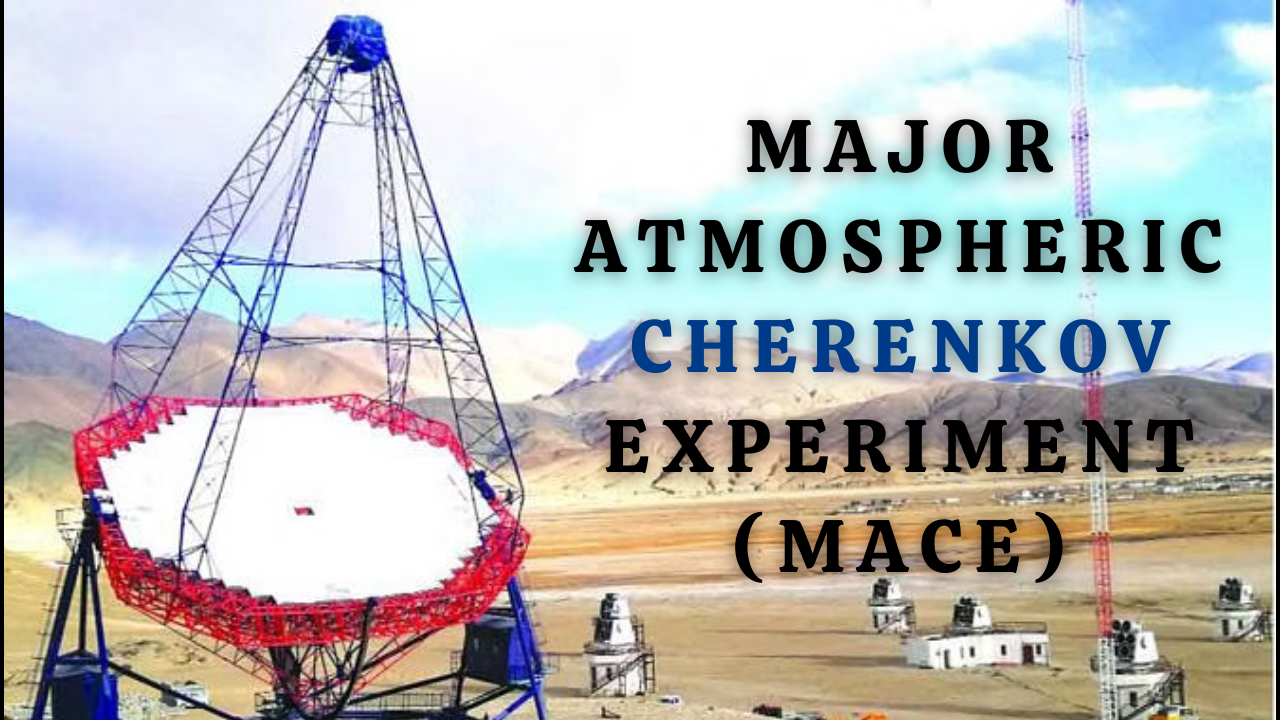Major Atmospheric Cherenkov Experiment (MACE) Observatory
Context:MACE
Recently the Secretary of the Department of Atomic Energy (DAE) and Chairman of the Atomic Energy Commission, inaugurated the MACE Observatory in Hanle, Ladakh.
|
Cherenkov experiments involve the study of Cherenkov radiation, a phenomenon that occurs when charged particles, such as electrons or protons, travel through a dielectric medium (like water) at speeds exceeding the speed of light in that medium. This results in the emission of a characteristic blue light, similar to a sonic boom produced by an object travelling faster than sound. |
More on News:
- This state-of-the-art facility is the largest imaging Cherenkov telescope in Asia and holds the distinction of being the highest of its kind globally, situated at an altitude of approximately 4,300 metres.
- This inauguration was part of the DAE’s Platinum Jubilee celebrations.
Key Highlights:
- Indigenous Development: Built by the Bhabha Atomic Research Centre (BARC) in collaboration with the Electronics Corporation of India Ltd (ECIL) and other Indian industry partners.
- Research Focus: MACE is set to position India at the forefront of global cosmic ray research by enabling the study of high-energy gamma rays.
- Construction Features: Lightweight yet strong design with high-temperature endurance.
- Ultra-fast backend electronics optimised for low-power and cold-temperature operations, with nanosecond digitisation capabilities.
- Observation Capabilities: MACE can capture gamma-ray flares from sources up to 200 million light-years away.
- Hanle’s Unique Conditions: The area’s extremely low light pollution provides ideal conditions for gamma-ray observations.
- Its geographical position allows MACE to monitor cosmic sources that are not visible from other locations worldwide.
|
Gamma Ray Detection: Gamma rays do not reach the Earth’s surface due to atmospheric absorption but generate high-energy particles that emit Cherenkov radiation. MACE captures this radiation using its mirrors and cameras, tracing it back to its cosmic source. |
Future Aspirations:
- Scientific Impact: MACE will enhance India’s capacity to study high-energy phenomena like supernovae and black holes, complementing global observatories.
- International Collaboration: Aims to foster partnerships and strengthen India’s position in the global scientific community.
- Inspiration for Future Generations: Encourages exploration of new frontiers in astrophysics among students and young scientists.
Conclusion:
The inauguration of the MACE observatory marks a significant advancement for India in the field of astrophysics and cosmic-ray research, enhancing its capabilities to explore the mysteries of the universe.
Subscribe to our Youtube Channel for more Valuable Content – TheStudyias
Download the App to Subscribe to our Courses – Thestudyias
The Source’s Authority and Ownership of the Article is Claimed By THE STUDY IAS BY MANIKANT SINGH






